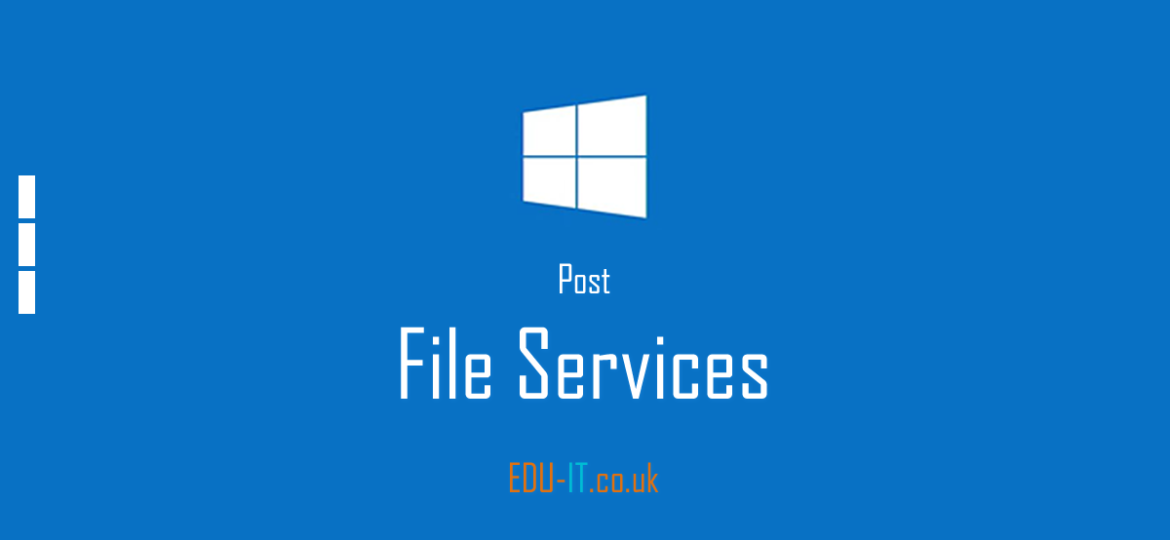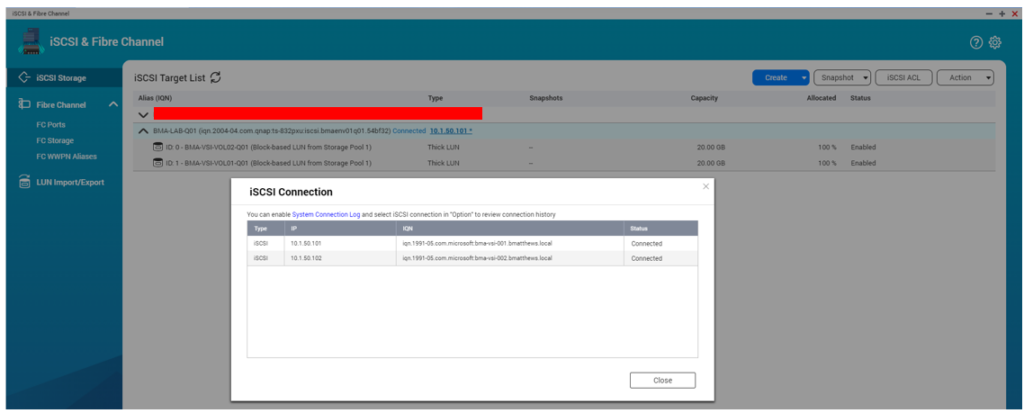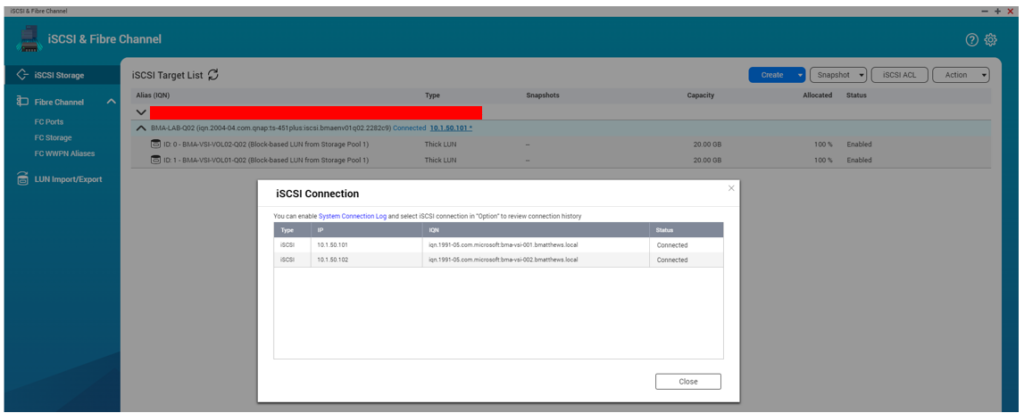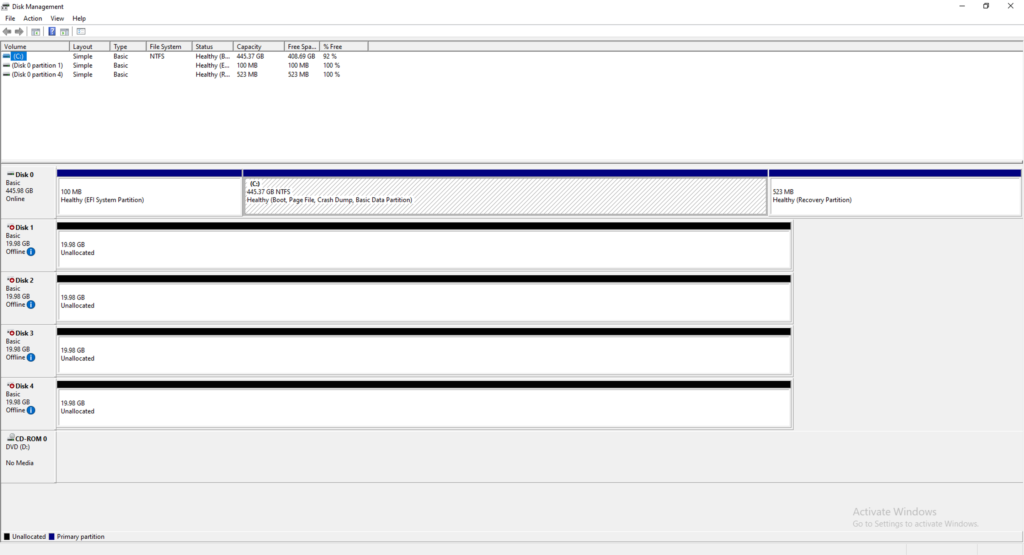
Series – Virtual Server Infrastructure Configuration
In this post I will show how I have used ISCSI Targets, LUNs, Initiators & Disk Management as part of my VSI configuration.
ISCSI Target
An ISCSI Target is a storage resource where you can present network based ISCSI storage to devices on your network using initiators. You can add different types of LUN to the ISCSI Target, depending on the storage device that you use.
In my case I use QNAPs to present network based ISCSI storage to my Hyper-V hosts.
My Configuration
In my configuration I use 2 QNAP devices to present ISCSI targets to both my Hyper-V hosts, which have hostnames BMA-VSI-001 & BMA-VSI-002.
The reason for this is so that any data which I create would be stored across 2 physical storage devices, reducing the risk of data loss if one were to fail.
On QNAP 01 I created an ISCSI Target called BMA-LAB-Q01 and added 2 Block Based LUNs to it, each with a size of 20GB.
On QNAP 02 I created an ISCSI Target called BMA-LAB-Q02 and added 2 Block Based LUNs to it, each with a size of 20GB.
QNAP 01
Target Name: BMA-LAB-Q01
LUN: BMA-VSI-VOL01-Q01
LUN: BMA-VSI-VOL02-Q01
QNAP 02
Target Name – BMA-LAB-Q02
LUN: BMA-VSI-VOL01-Q02
LUN: BMA-VSI-VOL02-Q02


I logged onto host 001 & in the start menu typed ISCSI Initiator and opened the app.
In the Target field, I entered the IP address of BMA-LAB-001 and clicked the Quick Connect button.

It then connected to my ISCSI Target BMA-LAB-Q01.

We now need to specify which NIC on the Host will be used to send/receive ISCSI storage traffic.
This will make your network slightly more efficient as it’s good practice to separate different types of traffic.
I clicked the Disconnect button so that the target disconnects. The target connection will show as inactive, like the screenshot below.
I clicked the Connect button, this will open a new Connect To Target box, as shown in the screenshot below.
I clicked the Advanced button within the Connect To Target box.
Selected the Microsoft ISCSI Initiator from the Local adapter drop-down.
Selected the 10.1.50.101 IP address from the Initiator IP drop-down.
Clicked Ok.

I logged onto QNAP 01 and can now see that host 001 is connected to target BMA-LAB-Q01 using the Initiator IP which I specified earlier (10.1.50.101). See image below.

I repeated the steps above to connect host 002 to target BMA-LAB-Q01.
I then had an outcome where each host was connected to the ISCSI Target BMA-LAB-001.
As I use 2 QNAPs, I repeated the steps above to connect host 001 & 002 to my second ISCSI Target BMA-LAB-Q02.
The outcome I expect is that each of my Hyper-V hosts has a connection to both ISCSI Targets.
See screenshots below showing host connections to each ISCSI Target.
Target BMA-LAB-Q01

Target BMA-LAB-Q02

If you open up Disk Management on either host you will be able to see the 4x LUNs presented as Disks from both ISCSI Targets.

Please read my next post on Creating a Failover Cluster.

